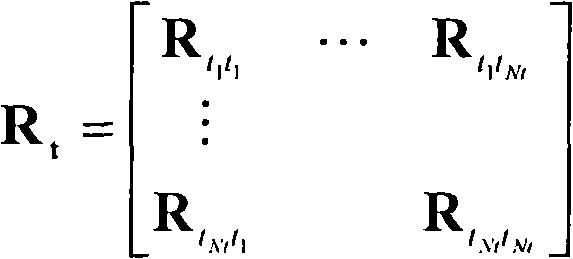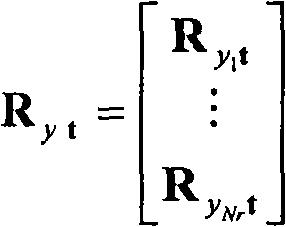Method and apparatus for estimating channel based on implicit training sequence
A training sequence and channel estimation technology, which is applied in the field of channel estimation, can solve the problems of impracticality, inability to track channel changes in real time, and many parameters to be estimated in the exponential base expansion model.
Inactive Publication Date: 2008-10-22
SOUTHEAST UNIV +1
View PDF0 Cites 10 Cited by
- Summary
- Abstract
- Description
- Claims
- Application Information
AI Technical Summary
Problems solved by technology
However, this method assumes that the phase shift of each arrival path is known when estimating the time-varying channel, which is unrealistic, and the exponential base expansion model has many parameters to be estimated, and cannot track channel changes in real time
Method used
the structure of the environmentally friendly knitted fabric provided by the present invention; figure 2 Flow chart of the yarn wrapping machine for environmentally friendly knitted fabrics and storage devices; image 3 Is the parameter map of the yarn covering machine
View moreImage
Smart Image Click on the blue labels to locate them in the text.
Smart ImageViewing Examples
Examples
Experimental program
Comparison scheme
Effect test
Embodiment Construction
the structure of the environmentally friendly knitted fabric provided by the present invention; figure 2 Flow chart of the yarn wrapping machine for environmentally friendly knitted fabrics and storage devices; image 3 Is the parameter map of the yarn covering machine
Login to View More PUM
 Login to View More
Login to View More Abstract
The present invention provides a channel estimation method and apparatus based on implicit training sequences for use in wireless communication systems, characterized in that stationary training sequences are superimposed with information sequences for transmission at the transmitting side and channel estimation is performed at the receiving side by using the uncorrelated characteristic between the training sequences and the information sequences, that is, channel estimation is done based on the principle that the estimation result of channel parameter converges to a Wiener solution under the condition that the training sequences and information sequences in the transmission signals are uncorrelated.; The method of the invention comprises steps of: obtaining a set of training sequences comprising a plurality of subsets of training sequences, each of the plurality of subsets is generated based on a known initial training sequence and a predetermined channel order; calculating the cross-correlation matrix for the subsets of training sequences and the corresponding inverse matrix; calculating the cross-correlation matrix for the set of training sequences and the received signals; and estimating channel parameters based on the inverse cross-correlation matrix for the subsets of training sequences and the cross-correlation matrix for the set of training sequences and the received signals.
Description
A Method and Device for Estimating Channel Based on Hidden Training Sequence field of invention The present invention relates to a wireless communication system, in particular to a method and device for estimating a channel. Background technique Signal transmission on a wireless channel usually experiences signal fading and distortion due to transmission distance, obstruction by obstacles, and relative motion between the receiver and the transmitter, making the data received by the receiver different from the data sent by the transmitter . In order to recover data correctly at the receiving end, it is usually used to insert a known training sequence at a specific position in the sent communication data segment, so that the receiving end can obtain the training sequence used for the expected signal distortion by processing the expected training sequence. Channel parameter estimation for data recovery. FIG. 1 shows a typical burst signal structure in the third generation m...
Claims
the structure of the environmentally friendly knitted fabric provided by the present invention; figure 2 Flow chart of the yarn wrapping machine for environmentally friendly knitted fabrics and storage devices; image 3 Is the parameter map of the yarn covering machine
Login to View More Application Information
Patent Timeline
 Login to View More
Login to View More IPC IPC(8): H04L25/02
CPCH04L25/0204H04B7/04H04L25/0228H04L25/0244
Inventor 杨绿溪李元杰
Owner SOUTHEAST UNIV
Features
- R&D
- Intellectual Property
- Life Sciences
- Materials
- Tech Scout
Why Patsnap Eureka
- Unparalleled Data Quality
- Higher Quality Content
- 60% Fewer Hallucinations
Social media
Patsnap Eureka Blog
Learn More Browse by: Latest US Patents, China's latest patents, Technical Efficacy Thesaurus, Application Domain, Technology Topic, Popular Technical Reports.
© 2025 PatSnap. All rights reserved.Legal|Privacy policy|Modern Slavery Act Transparency Statement|Sitemap|About US| Contact US: help@patsnap.com



